Best Java Programming Books to Buy in December 2025

Java: The Complete Reference, Thirteenth Edition


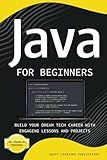
Java for Beginners: Build Your Dream Tech Career with Engaging Lessons and Projects


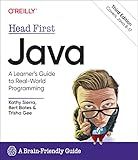
Head First Java: A Brain-Friendly Guide


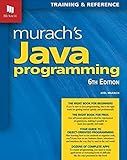
Murach's Java Programming Book Complete Guide for Beginners & Advanced Developers - Self-Paced Learning with GUI, Database & Object-Oriented Programming - Professional Coding Skills (6th Edition)


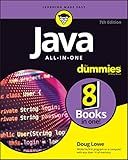
Java All-in-One For Dummies


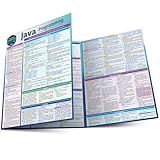
Java Programming Language: a QuickStudy Laminated Reference Guide


In Java, exceptions are used to handle errors or exceptional events that occur during the execution of a program. These exceptions can be caught and handled using the try-catch mechanism. Here's how you can catch exceptions in Java:
- A try block is used to enclose the code that might throw an exception. Inside the try block, you write the code that you want to monitor for exceptions.
- Following the try block, one or more catch blocks can be added to handle specific exceptions. Each catch block specifies the exception type it can handle.
- When an exception occurs within the try block, the execution of the try block is halted, and the Java runtime looks for a catch block that can handle the exception.
- If an appropriate catch block is found, the code inside that catch block is executed. It provides a way to handle the exceptional scenario gracefully, without terminating the program abruptly.
- If no catch block exists that can handle the exception, the program terminates abruptly and an error message is displayed.
- The catch block has a parameter that represents the thrown exception. You can access this parameter to obtain details about the exception like the error message, stack trace, etc.
Here's the basic syntax for catching exceptions in Java:
try { // Code that might throw an exception } catch (ExceptionType1 exceptionVariable) { // Code to handle ExceptionType1 } catch (ExceptionType2 exceptionVariable) { // Code to handle ExceptionType2 } catch (ExceptionType3 exceptionVariable) { // Code to handle ExceptionType3 } finally { // Optional block executed regardless of whether an exception occurred or not }
It's important to note that the catch blocks should be ordered from the most specific exceptions to the most general ones. This ensures that the catch blocks for specific exceptions are executed before more general catch blocks.
Additionally, there is an optional finally block that can be added after the catch blocks. The statements inside the finally block are executed regardless of whether an exception occurred or not. It is commonly used for cleanup tasks such as closing resources like files or database connections.
By using the try-catch mechanism, you can handle exceptions intelligently and create more robust and reliable Java programs.
Can you use multiple 'catch' blocks for different exceptions in Java?
Yes, you can use multiple catch blocks to handle different exceptions in Java. The catch blocks are used to catch and handle exceptions that may occur in the try block.
Here's an example:
try { // code that may throw exceptions } catch (IOException e) { // handle IOException } catch (NullPointerException e) { // handle NullPointerException } catch (Exception e) { // handle any other exceptions }
In the above example, the first catch block will handle IOException, the second catch block will handle NullPointerException, and the third catch block will handle any other exceptions (since Exception is the superclass of all exceptions).
Note that the order of the catch blocks is important. It is recommended to catch more specific exceptions before catching more general ones. Otherwise, the more general catch blocks will catch all exceptions before the more specific ones have a chance to handle them.
How do you log exceptions in Java applications?
There are multiple ways to log exceptions in Java applications. Here are three commonly used approaches:
- Using System.err: You can use the System.err.println() or System.err.print() methods to print the exception message and stack trace to the standard error stream. This is a basic approach but may not provide advanced logging capabilities.
try { // Code that may throw exceptions } catch (Exception e) { e.printStackTrace(System.err); }
- Using java.util.logging: The java.util.logging package provides a built-in logging mechanism in Java. You can create a logger and use the log() method to log exceptions at different logging levels. The logging configuration can be customized through logging.properties file.
import java.util.logging.Logger;
Logger logger = Logger.getLogger("MyLogger");
try { // Code that may throw exceptions } catch (Exception e) { logger.severe("Exception occurred: " + e.getMessage()); logger.severe(Arrays.toString(e.getStackTrace())); }
- Using a logging framework like Log4j or SLF4J: Logging frameworks offer more advanced logging capabilities and allow you to configure logging levels, output destinations, and log file rotation. Two popular logging frameworks are Log4j and SLF4J. You will need to add the appropriate logging library to your project's dependencies.
Using Log4j:
import org.apache.log4j.Logger;
Logger logger = Logger.getLogger("MyLogger");
try { // Code that may throw exceptions } catch (Exception e) { logger.error("Exception occurred: " + e.getMessage(), e); }
Using SLF4J:
import org.slf4j.Logger; import org.slf4j.LoggerFactory;
Logger logger = LoggerFactory.getLogger("MyLogger");
try { // Code that may throw exceptions } catch (Exception e) { logger.error("Exception occurred: {}", e.getMessage(), e); }
Using logging frameworks enables you to have more control over logging behavior, like filtering log messages, specifying different log levels, and configuring log outputs.
Why do we need to catch exceptions in Java?
We need to catch exceptions in Java for several reasons:
- Error handling: Exceptions allow us to identify and handle errors or exceptional situations that may occur during the execution of a program. By catching and handling exceptions, we can prevent the program from crashing or producing unexpected results.
- Program stability: Catching exceptions helps in maintaining the stability of a program. It allows us to gracefully recover from errors and continue the execution of the program, rather than abruptly terminating it.
- Debugging: Catching exceptions provides useful information about the cause and location of errors. With the help of stack traces, which are printed when an exception is thrown, we can identify the sequence of method calls leading to the exception and find bugs or problematic code segments.
- User-friendly error messages: By catching exceptions, we can display user-friendly error messages or prompts, helping users understand and resolve any issues that occur during program execution.
- Correct resource management: Exceptions help ensure proper resource management, such as closing files or releasing network connections, even if an error occurs. By catching exceptions, we can properly finalize and clean up resources before terminating the program.
Overall, catching exceptions in Java is essential for maintaining program stability, improving error handling, and facilitating debugging and user experience.
How do you handle checked exceptions in Java?
Checked exceptions in Java are exceptional conditions that a method must declare in its method signature using the throws keyword. When a method throws a checked exception, it is the responsibility of the calling method to handle it. Here are a few ways to handle checked exceptions in Java:
- Try-catch block: Wrap the method call that throws a checked exception in a try-catch block and provide a catch block for each checked exception type.
try { // method call that throws checked exception } catch (CheckedExceptionType1 e1) { // exception handling code for CheckedExceptionType1 } catch (CheckedExceptionType2 e2) { // exception handling code for CheckedExceptionType2 }
- Propagate the exception: If the calling method cannot handle the exception, it can also re-throw the exception by declaring it in its signature using the throws keyword. This continues the exception propagation until it reaches a suitable catch block.
public void callerMethod() throws CheckedException { // method call that throws checked exception }
- Use a finally block: A finally block is executed regardless of whether an exception occurs or not. It is often used to release resources that were acquired in the try block.
try { // method call that throws checked exception } catch (CheckedException e) { // exception handling code } finally { // code to release resources }
- Use a throws declaration: If the calling method cannot handle the checked exception itself and doesn't want to propagate it, it can declare the checked exception using the throws keyword. This forces the calling method to either handle the exception or propagate it further.
public void callerMethod() throws CheckedException { // method call that throws checked exception }
It is important to handle checked exceptions appropriately to ensure the correct functioning of the program and provide error handling mechanisms to handle exceptional conditions.
What is the difference between throw and throws in Java?
In Java, throw and throws are keywords used to handle exceptions in different ways:
- throw: The throw keyword is used to explicitly throw an exception object within a method. It is used when a specific exception condition occurs and the programmer wants to signal that an exceptional situation has occurred. The throw statement is followed by the exception that is thrown, and it must be inside a try-catch block or be declared with the throws keyword.
Example:
public void doSomething(int value) throws IllegalArgumentException { if (value <= 0) { throw new IllegalArgumentException("Value must be positive"); } // Rest of the code }
- throws: The throws keyword is used in the method signature to declare that a method may throw an exception. It is used to delegate the handling of exceptions to the calling method or the JVM. When a method throws an exception using the throws keyword, it is indicating that the exception may occur during the execution of the method and the caller of the method should handle it using a try-catch block.
Example:
public void doSomething() throws IOException { // IO operations that may throw an IOException }
In summary, throw is used to manually throw an exception, while throws is used to declare that a method may throw an exception and delegates the responsibility of handling that exception to the caller of the method.
